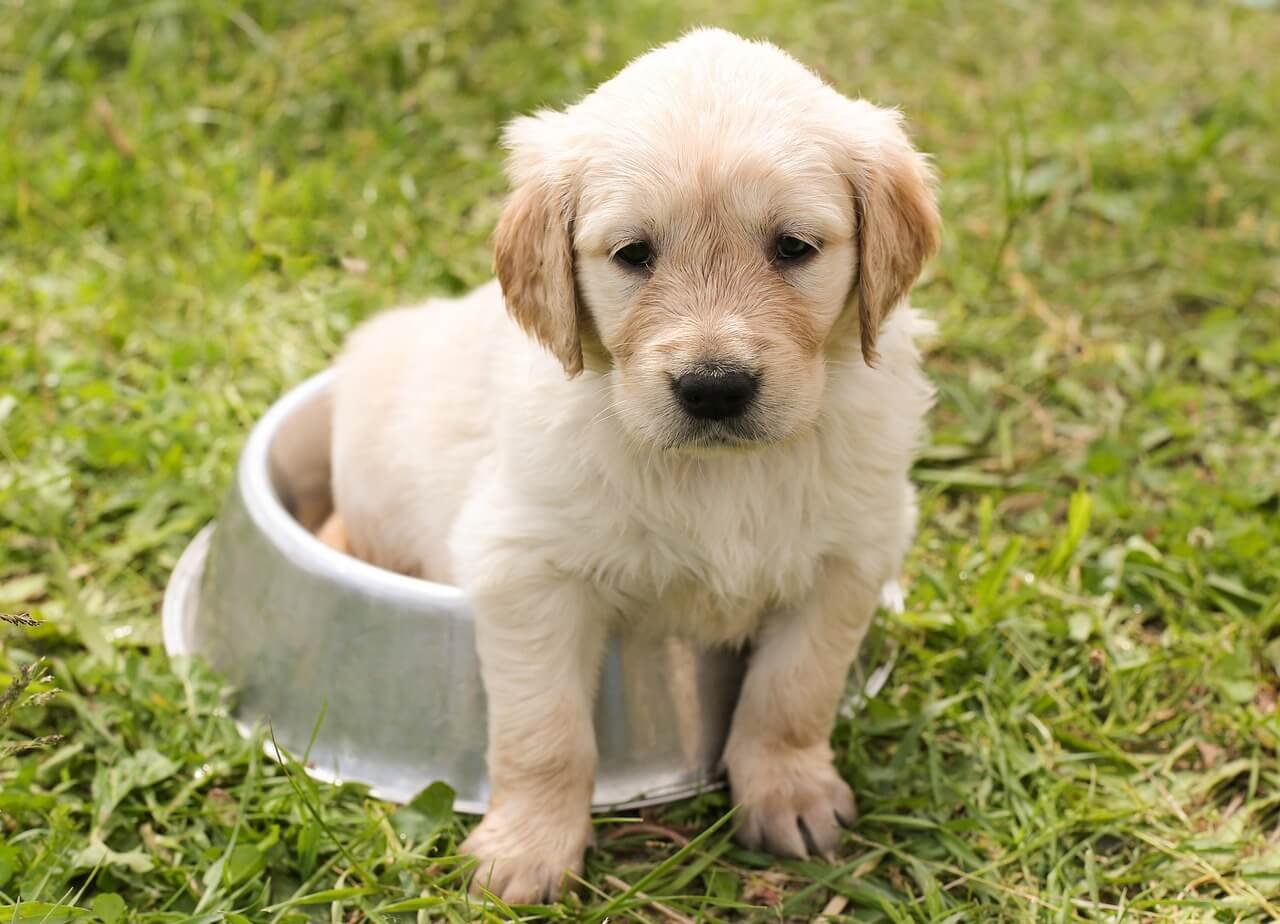How Much to Feed a Labrador: A Complete Guide
Labradors are one of the most beloved dog breeds, known for their friendly personalities, intelligence, and boundless energy. However, their love for food can sometimes lead to overeating and weight gain if not managed properly. Knowing how much to feed a Labrador is essential to ensure they stay healthy, active, and happy. Factors like age, activity level, and individual metabolism all play a role in determining the right portion sizes. In this blog post, we’ll explore everything you need to know about feeding your Labrador, from daily food requirements to tips for maintaining a balanced diet. By the end, you’ll have a clear understanding of how to keep your furry friend nourished and thriving.
Factors That Influence How Much to Feed a Labrador
Determining the right amount of food for your Labrador depends on several key factors. Understanding these variables will help you tailor their diet to meet their specific needs. Here’s what to consider:
Age: Puppies require more frequent meals and higher calorie intake to support growth, while senior dogs need fewer calories to prevent weight gain.
Activity Level: Highly active Labradors, such as those involved in agility or outdoor work, burn more calories and may need larger portions.
Weight and Size: Larger Labradors naturally require more food than smaller ones, but portion sizes should always align with their ideal weight.
Metabolism: Some Labradors have faster metabolisms and may need slightly more food, while others are prone to gaining weight easily.
Health Conditions: Dogs with medical issues like diabetes or obesity may need specialized diets and portion control under veterinary guidance.
By taking these factors into account, you can create a feeding plan that supports your Labrador’s overall health and well-being. Every dog is unique, so adjustments may be necessary over time.
Daily Feeding Guidelines for Labradors
To ensure your Labrador receives the right amount of nutrition, it’s important to follow general feeding guidelines based on their life stage. Here’s a breakdown of how much to feed your Labrador at different stages of life:
Puppies (2-6 months): Feed 3-4 small meals per day, totaling about 1.5 to 2 cups of high-quality puppy food.
Adolescents (6-12 months): Gradually reduce to 2 meals per day, providing around 2 to 3 cups of food daily.
Adults (1-7 years): Feed 2 meals per day, with each meal consisting of 1.5 to 2.5 cups of adult dog food, depending on activity level.
Seniors (7+ years): Adjust portions to prevent weight gain, typically 1.5 to 2 cups split into two meals, focusing on nutrient-rich senior formulas.
Pregnant or Nursing Females: Increase food intake significantly, offering up to 3-4 cups per meal to support their nutritional needs.
These guidelines provide a solid foundation, but always monitor your Labrador’s weight and adjust portions as needed. Regular vet check-ups can also help fine-tune their diet.
Check this guide 👉Top 4 Premium Beef Dog Food Options for Ultimate Nutrition!
Check this guide 👉5 Best High-Fat Dog Foods for Ultimate Energy & Health!
Check this guide 👉5 Best Gluten-Free Dog Foods for Ultimate Health Boost!

Life Stage | Recommended Daily Food Amount |
|---|---|
Puppy (2-6 months) | 1.5 to 2 cups, divided into 3-4 meals |
Adolescent (6-12 months) | 2 to 3 cups, divided into 2 meals |
Adult (1-7 years) | 3 to 5 cups, divided into 2 meals |
Senior (7+ years) | 1.5 to 2 cups, divided into 2 meals |
Pregnant/Nursing | Up to 6-8 cups, divided into 3-4 meals |
Tips for Feeding Your Labrador Properly
Feeding your Labrador isn’t just about the quantity—it’s also about how and when you feed them. Here are some practical tips to ensure your dog gets the most out of their meals:
Stick to a Schedule: Feed your Labrador at the same times each day to establish a routine and aid digestion.
Use High-Quality Food: Choose premium dog food that meets your Labrador’s nutritional needs and avoids artificial additives.
Avoid Overfeeding Treats: Limit treats to no more than 10% of their daily caloric intake to prevent excessive weight gain.
Monitor Weight Regularly: Keep an eye on your Labrador’s body condition and adjust portions if they start gaining or losing weight.
Provide Fresh Water: Always ensure your dog has access to clean, fresh water, especially during and after meals.
By following these tips, you can help your Labrador maintain a healthy weight and enjoy a balanced diet. Consistency and attention to detail are key to their long-term health.
Common Mistakes to Avoid When Feeding a Labrador
Even well-meaning owners can make mistakes when feeding their Labradors. These errors can lead to health issues like obesity or malnutrition. Here are some common pitfalls to avoid:
Free Feeding: Leaving food out all day can encourage overeating and disrupt portion control.
Ignoring Portion Sizes: Guessing how much to feed instead of measuring portions can lead to underfeeding or overfeeding.
Overusing Table Scraps: Feeding human food, especially fatty or sugary items, can upset your Labrador’s stomach and lead to unhealthy habits.
Skipping Regular Vet Visits: Failing to consult your vet about dietary needs can result in missed opportunities to address health concerns.
Rapid Diet Changes: Switching foods abruptly can cause digestive upset; always transition gradually over 7-10 days.
By avoiding these mistakes, you can ensure your Labrador stays healthy and enjoys a nutritious diet. Prevention is always better than dealing with the consequences of poor feeding practices.
Signs Your Labrador is Eating the Right Amount
Ensuring your Labrador is eating the correct amount can be challenging, but there are clear signs that indicate whether their diet is on track. Observing these indicators will help you confirm they’re receiving the right nutrition. Here’s what to look for:
Healthy Weight: Your Labrador should have a visible waistline and ribs that can be felt but not seen.
Consistent Energy Levels: A well-fed Labrador will have plenty of energy for play and exercise without seeming sluggish or hyperactive.
Shiny Coat: A glossy, soft coat is a sign of proper nutrition and hydration.
Regular Digestion: Consistent bowel movements and absence of digestive issues like diarrhea or constipation indicate a balanced diet.
Good Mood: A happy, content demeanor often reflects a satisfied and nourished dog.
By paying attention to these signs, you can gauge whether your Labrador’s feeding routine is effective. If you notice any red flags, consult your vet for guidance.
Foods to Avoid Feeding Your Labrador
While Labradors are known for their love of food, not everything is safe for them to eat. Certain human foods can be toxic or harmful to dogs, so it’s important to know what to avoid. Here’s a list of foods that should never be given to your Labrador:
Chocolate: Contains theobromine, which is toxic to dogs and can cause vomiting, seizures, or even death.
Grapes and Raisins: Can lead to kidney failure, even in small amounts.
Onions and Garlic: These can damage red blood cells and cause anemia if consumed regularly.
Alcohol and Caffeine: Both substances are highly toxic and can lead to serious health issues.
Xylitol (Sugar Substitute): Found in sugar-free products, xylitol can cause a dangerous drop in blood sugar and liver failure.
Avoiding these foods ensures your Labrador stays safe and healthy. Always double-check ingredients and keep harmful items out of reach.
Benefits of Feeding High-Quality Dog Food
Investing in high-quality dog food can make a significant difference in your Labrador’s health and overall quality of life. Premium food provides essential nutrients that support their growth, energy, and longevity. Here are some benefits of choosing high-quality food for your Labrador:
Improved Digestion: High-quality food contains easily digestible ingredients that reduce the risk of stomach upset.
Stronger Immune System: Nutrient-rich formulas help boost your dog’s immunity, reducing the likelihood of illness.
Healthier Skin and Coat: Omega fatty acids in premium food promote a shiny coat and reduce skin irritation.
Better Weight Management: Balanced formulas prevent excessive weight gain while providing enough calories for active dogs.
Long-Term Health Benefits: Quality ingredients support joint health, heart function, and overall vitality as your Labrador ages.
By prioritizing high-quality food, you’re investing in your Labrador’s long-term well-being. The benefits far outweigh the slightly higher cost, ensuring your dog lives a happier, healthier life.
Frequently Asked Questions About Feeding a Labrador
How many times a day should I feed my Labrador?
Adult Labradors should be fed twice daily, while puppies may need 3-4 smaller meals per day.
Can Labradors eat grain-free food?
Yes, but consult your vet first, as some grain-free diets have been linked to heart issues in dogs.
What should I do if my Labrador is overweight?
Reduce portion sizes, increase exercise, and consult your vet for a tailored weight loss plan.
Are raw diets safe for Labradors?
Raw diets can be safe if properly balanced, but they come with risks like bacterial contamination. Always consult your vet.
How can I tell if my Labrador is eating enough?
Monitor their energy levels, body condition, and weight. If unsure, seek advice from your veterinarian.
In Conclusion: Feeding Your Labrador for a Healthy Life
Knowing how much to feed a Labrador is crucial for their overall health and happiness. From understanding portion sizes to avoiding common feeding mistakes, every decision you make impacts their well-being. By following the guidelines outlined in this blog post, you can ensure your Labrador receives the nutrition they need to thrive. Remember, feeding your dog is not just about filling their bowl—it’s about providing them with a balanced diet that supports their active lifestyle and keeps them by your side for years to come. With proper care and attention, your Labrador will remain a joyful and energetic companion throughout their life.
How Much to Feed a Labrador: Best 7 Expert Tips! Discover the ideal portion sizes, feeding schedules, and nutrition advice to keep your Labrador healthy and happy. Perfect for dog owners!
Dalmatian vs Labrador: Best 7 Expert Tips! Discover key differences in temperament, exercise needs, and care to choose the perfect breed for your lifestyle. Ideal for dog lovers!
Labrador Hunting: Best 7 Expert Tips! Discover essential advice for training, gear, and health to maximize your Labrador's potential in the field. Perfect for hunters!
The Labrador Cocker Spaniel Mix: Best 7 Expert Tips! Discover essential advice on training, care, and living with this friendly hybrid. Perfect for families and active lifestyles!




